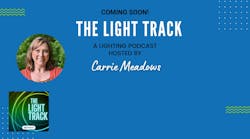On my leisurely drive to the Lighting Research Center (LRC) in Troy, NY this week, I wondered what kind of approach I should take to the LRC Partner-Alliance Event, a program of presentations on the organization's latest projects. In the partner program, companies and institutions with an interest in the lighting industry can collaborate with the LRC to identify and sponsor projects and studies that are expected to yield results that may be commercialized into applications and product development. Of course, there is the reciprocal benefit of guiding research into areas that can drive progress in solid-state lighting (SSL) and continue innovation in the industry. Since LEDs Magazine is not an active sponsor in this program, I decided my focus would be on getting a holistic perspective on what the LRC scientists spend time on and how that helps to direct our attention to developments and coverage.
Frankly, I couldn’t believe the sheer number of projects and reports and papers that were mentioned during the day’s presentations. I felt a little dizzy as Russ Leslie, who heads up the graduate programs for lighting, ticked down 30 projects in 30 minutes, and dynamically covered everything from lamps, lighting controls, and OLEDs to signage, circadian lighting studies, horticulture, and changes in lighting education at the research center. Well-known scientists such as Drs. Mariana Figueiro, John Bullough, and Jaimin Patel delivered more details on their teams’ studies on lighting for health and wellbeing, transportation lighting and safety concerns, and the ability of UV LEDs to impact plant health by reducing pathogens.
Unfortunately, I can’t deliver all the details of the presentations to you here — that would be a chronicle rather than a blog. You can find a full slate of project posters on the LRC website for a closer look. But the day led me to this observation… What struck me about the material was that no one discipline or application seemed to be held out as the great commercial hope for the future of SSL. Each project resonated with the passion of those involved, and the partner attendees were vocal about the need for additional studies or deliverables that could help them translate the information into value propositions for their colleagues, companies, and customers.
During the lunch break, lead research specialist Kassandra Gonzales guided me through the Light and Health Lab, where I was able to see some of the projects such as the light tables designed to help reduce depression and agitation in Alzheimer’s patients, and illuminated blankets engineered to help adjust the circadian rhythms of NICU infants.
I was intrigued to see that research into additive manufacturing (otherwise known as 3D printing) for SSL designs and even components is underway. LEDs Magazine had published an article on 3D manufacturing techniques back in 2014, but the potential of additive manufacturing has not yet gained a lot of buzz in the industry. Now 3D printer and materials costs are coming down to a point where commercialization of such services may indeed be lucrative. Still, there are challenges to resolve and performance that is being evaluated. I got a sneak peek into the 3D printing lab with LRC scientist Dr. Indika Perera and Dr. Nadarajah Narendran, and I’m afraid I admitted to “geeking out” a little bit because it shows a compelling evolution not only in SSL design concepts but the potential production of them.
During the event, Dr. Narendran delivered the message that the LRC continues to investigate and break ground on trending ideas and answer questions that resolve into practice — whether by delivering guidelines on healthy lighting design, or improved understanding of the principles of light spectrum for plants, or bringing the concept of connected lighting to transportation workers for safety. The LRC continues to promote inquiry, scientific-backed recommendations, and collaborative efforts to achieve its mission of “advancing the effective use of light for society and the environment.”1 And that’s what we here at LEDs Magazine thrive on — helping to deliver the information and resources that professionals rely on to identify trends, evolving technology developments, and business opportunities that will not only build up a robust market but will bring global benefits.
Special thanks to Rebekah Mullaney, Dr. N. Narendran, Dr. Indika Perera, and Kassandra Gonzales for their time.
*Updated on Sept. 11, 2017 at 9:49am to correct the partner event information.
REFERENCE
1. Lighting Research Center publication, p. iv, first printing March 2017.





